Real Greek Salad Recipe | Healthy and Original Taste
Greek salad, or Horiatiki as it’s traditionally known in Greece, is a staple of Mediterranean cuisine that’s loved around the world for its fresh flavors, simple ingredients, and healthy profile. But while many people think they’ve had a “Greek salad” at some point in their lives, few have truly tasted the authentic version made the traditional Greek way. A real Greek salad is not just about tossing vegetables with some dressing—it’s about balance, freshness, and honoring each ingredient without overwhelming the plate. In this article, we’ll walk through what makes a truly authentic Greek salad, step-by-step instructions for preparing it, variations found in different parts of Greece, and why it continues to be a globally admired dish for both health-conscious eaters and flavor seekers. Let’s dive into the colorful, sun-drenched world of real Greek salad.
What Is a Real Greek Salad?
A real Greek salad is a rustic, refreshing dish made with raw vegetables, briny olives, creamy feta cheese, and a simple yet punchy olive oil dressing. It’s typically served as a side dish during lunch or dinner, although it can also be enjoyed on its own for a light meal. Contrary to many “Greek salads” found outside of Greece, an authentic Horiatiki salad does not contain lettuce, vinegar-based dressings, or complicated spices. The focus is on the freshness of the ingredients and the harmony of natural flavors. The word “Horiatiki” translates roughly to “village-style,” reflecting its origin as a dish born in the rural parts of Greece where ingredients were picked straight from the garden or farm.
Key Ingredients in Authentic Greek Salad
Tomatoes
Ripe, juicy tomatoes are the foundation of any good Greek salad. Cherry tomatoes can be used in a pinch, but traditionally, large tomatoes are sliced into wedges or large chunks. The tomatoes should be sweet, firm, and in-season—nothing watery or under-ripe.
Cucumber
Crisp cucumber adds a cool contrast to the tomatoes. In Greece, cucumbers are usually sliced into thick half-moons or chunks, not thin slices. Some locals peel the skin partially, others leave it on for extra crunch and fiber.
Red Onion
Thinly sliced red onion gives the salad a slight bite without overpowering the other flavors. In Greece, onions are often soaked briefly in cold water to mellow their sharpness. This step helps balance the salad without losing the onion’s pleasant sharpness.
Green Bell Pepper
This is a classic ingredient that many versions outside of Greece omit. Sliced into rings or strips, green bell pepper adds a mild bitterness and crunch that rounds out the dish beautifully.
Kalamata Olives
You can’t have a real Greek salad without olives, and Kalamata olives are the gold standard. They should be whole, unpitted if possible, and not overly brined. The olives bring a deep, savory note that plays beautifully with the other fresh ingredients.
Feta Cheese
The crown jewel of any Greek salad is a thick slab of feta cheese. Authentic Greek salad features a large piece of feta laid across the top—not crumbled. It’s usually made from sheep’s milk (or sometimes a mix of sheep and goat milk) and has a firm texture with a tangy, salty flavor. The cheese should be creamy yet crumbly and full of character.
Olive Oil
Greek extra virgin olive oil is not just a dressing—it’s a crucial component. It adds richness and ties all the ingredients together. A generous drizzle is essential, and in many cases, no other dressing is needed beyond oil and a sprinkle of oregano.
Dried Oregano
No fresh herbs, no parsley—just a pinch of dried Greek oregano, which gives the salad its distinctive, earthy aroma. This herb brings the taste of the Greek mountains to your plate.
Optional But Traditional Additions
While the above ingredients are the core of a real Greek salad, some regions and cooks include additional touches. Capers are common on some Greek islands, especially Santorini. A splash of red wine vinegar is added by a few home cooks, though it’s more a matter of preference than a rule. Some variations might include small pickled peppers or even anchovies, but these are exceptions, not the standard.
Ingredients List (Serves 2–4)
-
3 large ripe tomatoes, cut into large chunks or wedges
-
1 medium cucumber, sliced into half-moons
-
1 small red onion, thinly sliced
-
1 green bell pepper, cut into rings or thin strips
-
A handful of whole Kalamata olives (about 10–12)
-
1 block of feta cheese (about 150–200g), kept whole or sliced thick
-
3–4 tablespoons extra virgin olive oil
-
1 teaspoon dried Greek oregano
-
Optional: sea salt, capers, splash of red wine vinegar
How to Make Real Greek Salad – Step-by-Step
Step 1: Prepare the Vegetables
Wash all the vegetables thoroughly. Start by cutting the tomatoes into large wedges or rustic chunks. Peel the cucumber if desired, and slice into half-moons. Slice the red onion thinly and soak in a small bowl of cold water for 10 minutes to reduce its sharpness. Drain and set aside. Remove the seeds from the green bell pepper and slice it into thin rings or short strips. Set all the vegetables aside in a large mixing bowl.
Step 2: Assemble the Salad
In a large, shallow bowl or serving plate, layer the tomatoes, cucumbers, bell peppers, and red onions. Scatter the Kalamata olives evenly on top. Place the whole block of feta cheese over the center of the salad or break it into large thick slices across the vegetables. Do not crumble.
Step 3: Season and Dress
Drizzle the olive oil generously over the salad, ensuring that the feta and all vegetables get a light coating. Sprinkle the oregano over the feta. Add a small pinch of sea salt if needed, though remember the olives and feta already bring saltiness. For added acidity, you can add a few drops of red wine vinegar, but many Greeks skip it.
Step 4: Serve Immediately
Greek salad is best served fresh and at room temperature. It doesn’t require refrigeration before serving. Let the flavors mingle for a few minutes before eating, but don’t let it sit too long or the tomatoes and cucumbers will begin to release too much water.
Serving Suggestions
Greek salad pairs beautifully with grilled meats like lamb, chicken, or pork souvlaki. It also works as a refreshing side for seafood, especially grilled octopus or sardines. Many Greeks enjoy it with crusty bread, which is perfect for soaking up the flavorful olive oil and tomato juices left at the bottom of the plate. Add a glass of ouzo or dry white wine, and you’ve got a complete Mediterranean meal.
Variations Around Greece
While the core recipe remains consistent across the country, slight regional variations exist that reflect local tastes and available ingredients. On the island of Crete, for instance, they often add barley rusks and call it Dakos, a dish that blends Greek salad with bruschetta. In Santorini, capers are more common, as is a local version of goat cheese instead of feta. In Northern Greece, they may use green olives instead of Kalamata, and sometimes toss in pickled green chili peppers for a little heat. Some island versions might even include small anchovy fillets laid on top. But across the country, the principles remain the same: fresh ingredients, simple preparation, and a deep respect for natural flavors.
Health Benefits of Greek Salad
One of the biggest reasons Greek salad is loved across the globe is its nutritional value. It’s naturally low in carbs and high in vitamins, especially from the tomatoes, cucumber, and peppers. Feta cheese provides a good source of calcium and protein. Olive oil contributes heart-healthy fats and antioxidants, while olives add fiber and monounsaturated fats. The salad is gluten-free and vegetarian by default. It also fits into Mediterranean and keto diets. Plus, because the dish is raw and unprocessed, you get the full benefits of each ingredient without additives or preservatives.
Tips for Making the Best Greek Salad
-
Use the ripest tomatoes you can find. This is the heart of the dish.
-
Never crumble the feta; a solid slab offers better texture and presentation.
-
Use the best olive oil you can afford—Greek, cold-pressed, and extra virgin.
-
Let the salad rest for a few minutes before eating to allow flavors to blend.
-
Skip bottled dressings. The olive oil and oregano are all you need.
-
Always serve it fresh—Greek salad doesn’t keep well in the fridge.
Storing Leftovers
Greek salad is best enjoyed immediately. However, if you do have leftovers, store them in an airtight container in the fridge for no more than one day. The tomatoes and cucumbers will release water, and the feta may become too soft. If you anticipate having leftovers, consider keeping the feta separate and adding it only to the portion being served.
Make It a Meal
Although traditionally a side dish, Greek salad can be easily transformed into a main meal. Just add grilled chicken, boiled eggs, or chickpeas for extra protein. Toss in some cooked quinoa or orzo pasta for a heartier twist. You can even turn it into a wrap using pita bread, hummus, and some roasted vegetables. These are not traditional, but they work wonderfully for a filling lunch or healthy dinner.
Why Greek Salad Tastes Better in Greece
Many people who travel to Greece and taste a real Greek salad often say it tastes different—better—than anything they’ve had at home. That’s largely due to the quality of local ingredients: sun-ripened tomatoes, fresh feta, just-pressed olive oil, and produce that hasn’t traveled far. Eating a Greek salad by the sea, with the sound of waves and the warmth of the sun, certainly adds to the magic. But even at home, by using quality ingredients and respecting the simplicity of the dish, you can come close to that unforgettable Mediterranean experience.
Final Thoughts
A real Greek salad isn’t just food—it’s a celebration of everything that makes Mediterranean cuisine so beloved: simplicity, freshness, and bold, honest flavors. Whether you’re serving it as part of a family feast or enjoying it on a summer afternoon with a piece of bread and a glass of wine, Greek salad brings the sunshine and flavors of Greece to your table. Don’t be tempted by imitations filled with lettuce and bottled dressings. Stick to the real thing, and you’ll understand why this dish has been a cornerstone of Greek life for generations. Try it once, and it might just become your new favorite go-to meal.
Images via pinterest

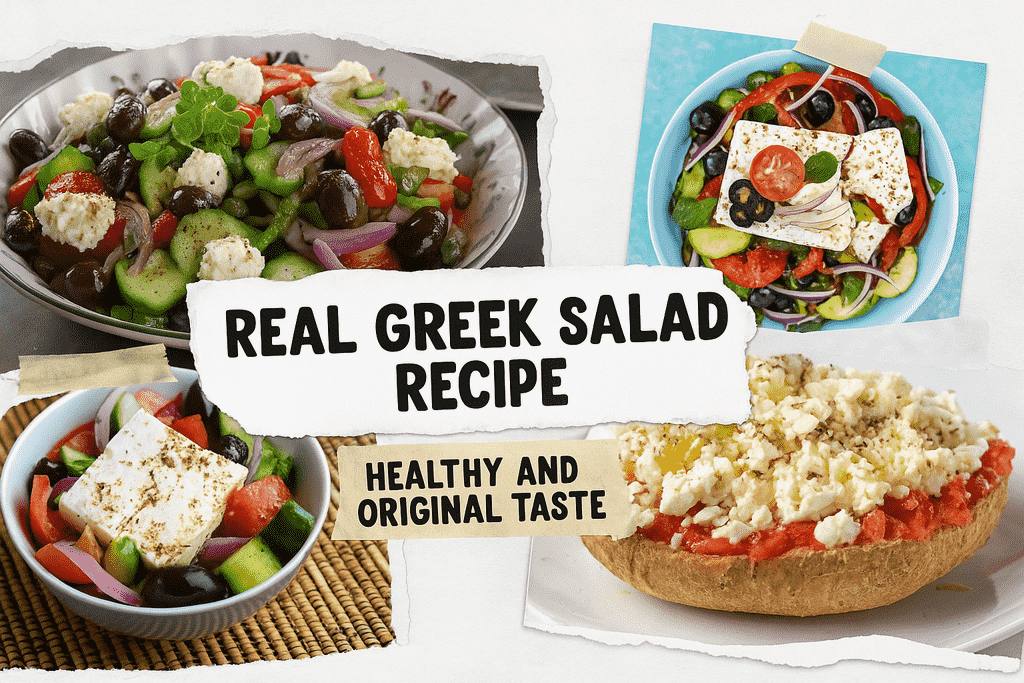

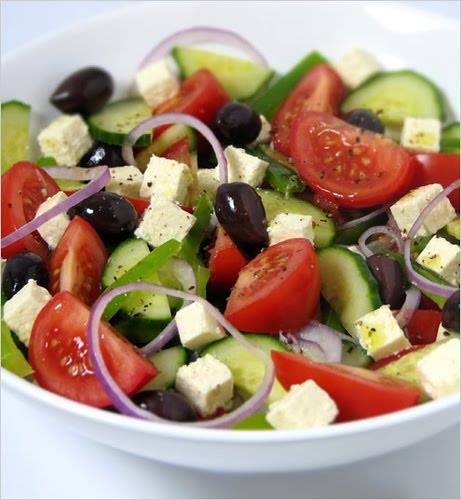
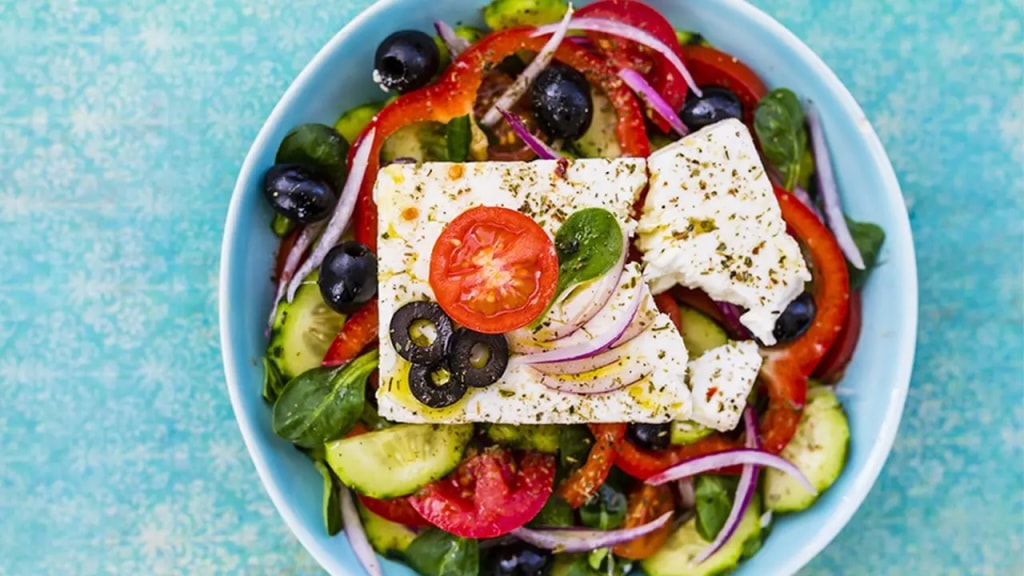
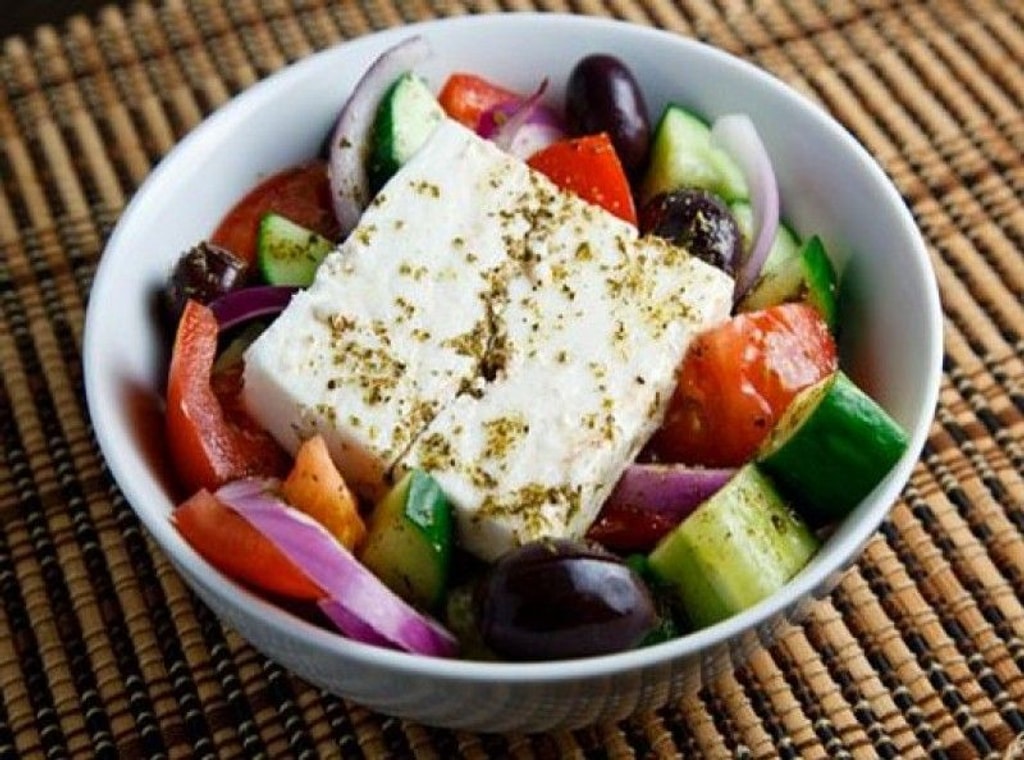

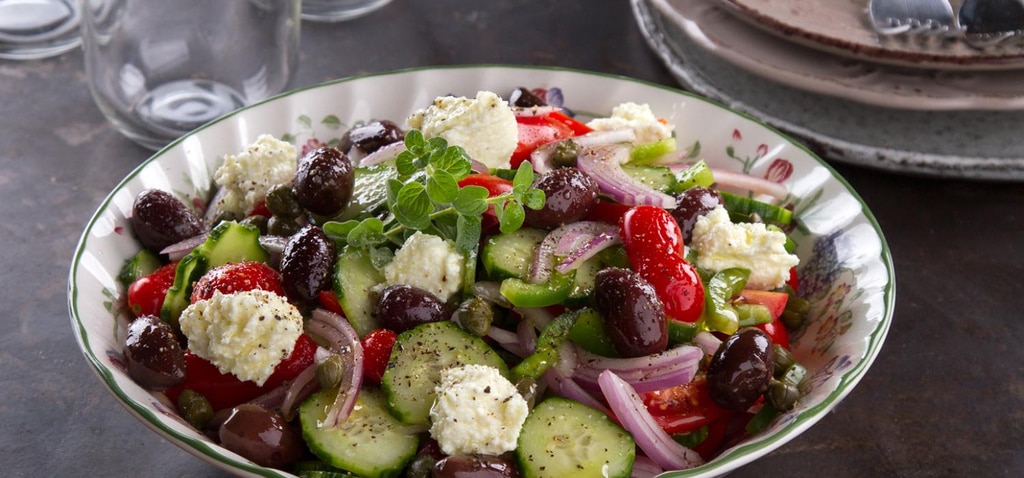





[…] The Healthy And Original Greek Salad […]